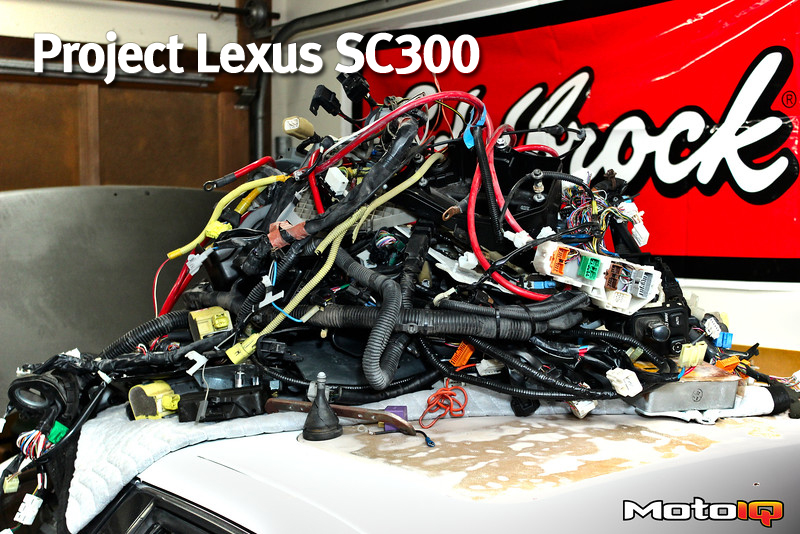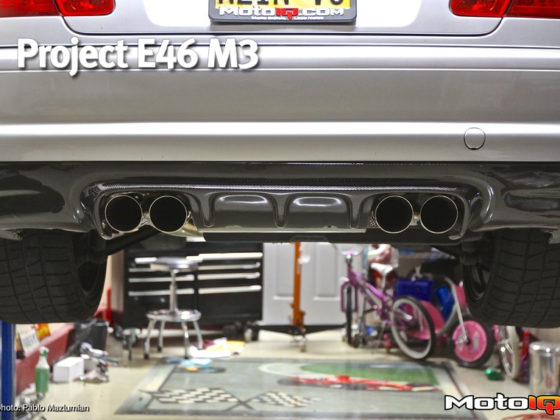,
 The new and improved, IP67-rated Haltech Elite 2500 ECU.
The new and improved, IP67-rated Haltech Elite 2500 ECU.Since I originally equipped the car with the Platinum Sport 2000 and the harness, Haltech has continued to evolve their ECU lineup. The recently released Elite series now has an IP67 environmentally sealed case, more inputs and outputs, and support for even more advanced features like drive-by-wire, OBDII, and then some. Haltech has maintained the same connector form factor on their ECUs for a while, which meant that only minor re-pinning of the 2JZ harness would be required to utilize the new Elite 2500.
 Haltech's single-channel wideband oxygen sensor controller, the WBC1.
Haltech's single-channel wideband oxygen sensor controller, the WBC1.Additionally, a Haltech WBC1 wideband controller would be used to keep tabs on the air/fuel ratios and to help the Elite 2500 ECU make corrections and adjustments automatically. The WBC1 utilizes a single Bosch LSU 4.2 oxygen sensor, which is an extremely common unit. There are other benefits to using the Haltech WBC1 in combination with the Elite 2500 that I will get to – I promise! But that doesn’t mean that you can’t use it if you have another manufacturer’s aftermarket ECU.
 The Racepak Smartwire power distribution system.
The Racepak Smartwire power distribution system.Since engine control was handled, the next serious wiring requirement involved power distribution. A few years back, Racepak, known primarily for their digital dashes and V-Net data loggers and sensors, debuted a digital solid-state power distribution system called Smartwire.
Unlike fuses and relays, the Smartwire system is fully programmable and features eight 20-amp outputs and 22 10-amp outputs, along with 12 inputs, all in a small form factor not much larger than most ECUs. Even accounting for future systems that I MIGHT add to the car (radio, cool suit, etc.), there are sufficient inputs and outputs to get the job done.
Because the unit is digital and programmable, you can do very interesting things. Outputs can have their currents and voltages monitored and protected with limit settings. They can be programmed to flash, pulse or other control strategies. The unit even has a special channel for windshield wiper control, an important feature on any race or road car. It even supports logic operations between inputs and other statuses to control outputs. While extremely high-end motorsports electronics companies like MoTeC, Bosch and others have offered similar power distribution systems for quite some time, the Racepak has an extremely reasonable sticker price of $1,799.00 — a significant savings compared with the other available options.
 The Racepak Smartwire switch panel.
The Racepak Smartwire switch panel.Racepak also makes a nifty little switch panel that has a push button (which I’ll use for the starter) and seven other toggle switches. The nice thing about Racepak products is that they are all designed to work together, much like Haltech’s. Wiring eight individual switches between the dashboard and the Smartwire would take a lot of time to do right. Instead, one single Smartwire cable connects between the two units. If another switch panel is desired, it can simply be added by chaining another short Smartwire cable between the two. If I wasn’t using AEM aftermarket sensors tied directly into the ECU, I could have even used Racepak V-NET sensors tied into the Smartwire, which could then control outputs, too!
Switches? Simplified. Fuses and relays? ELIMINATED. This is looking pretty slick.



